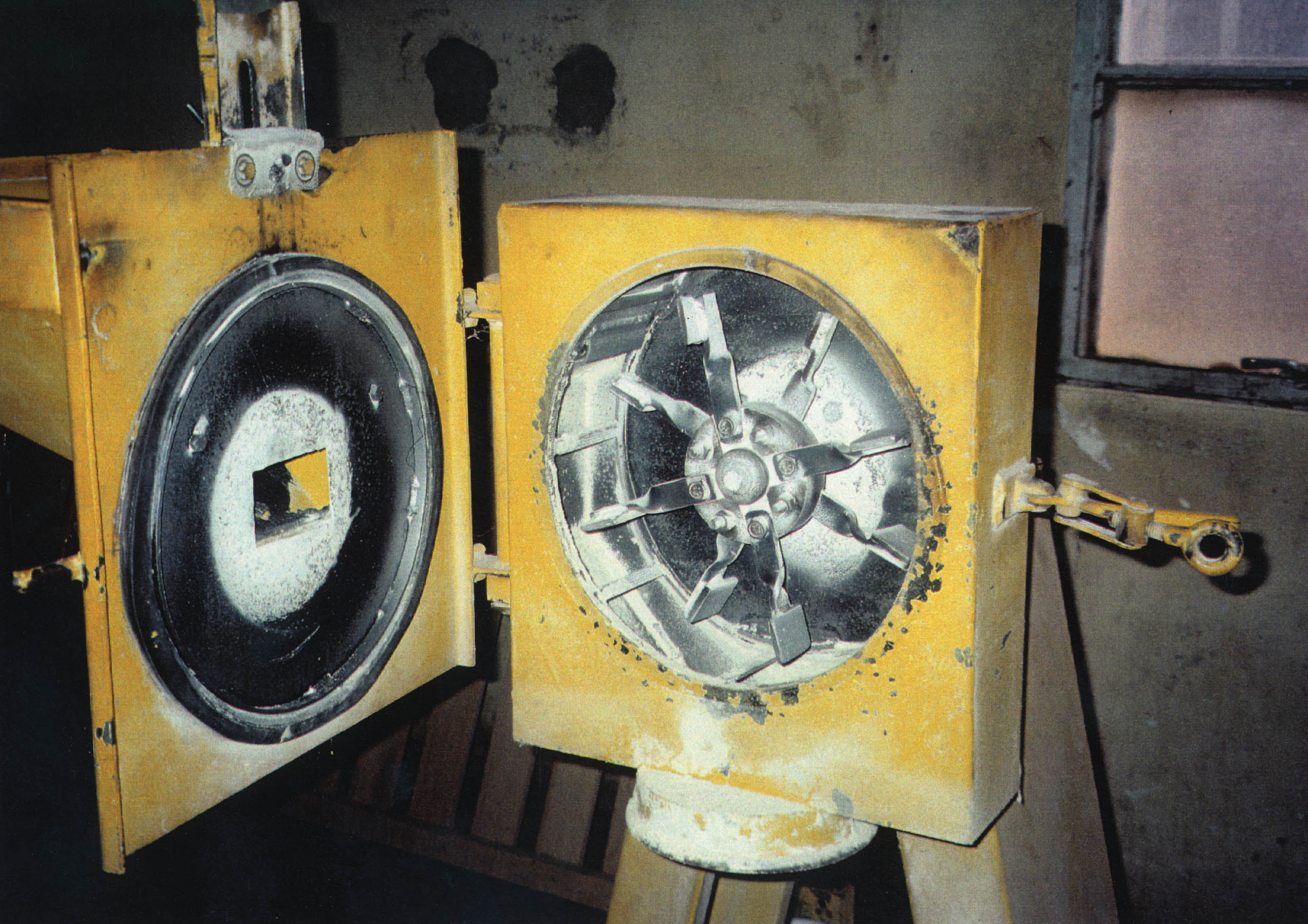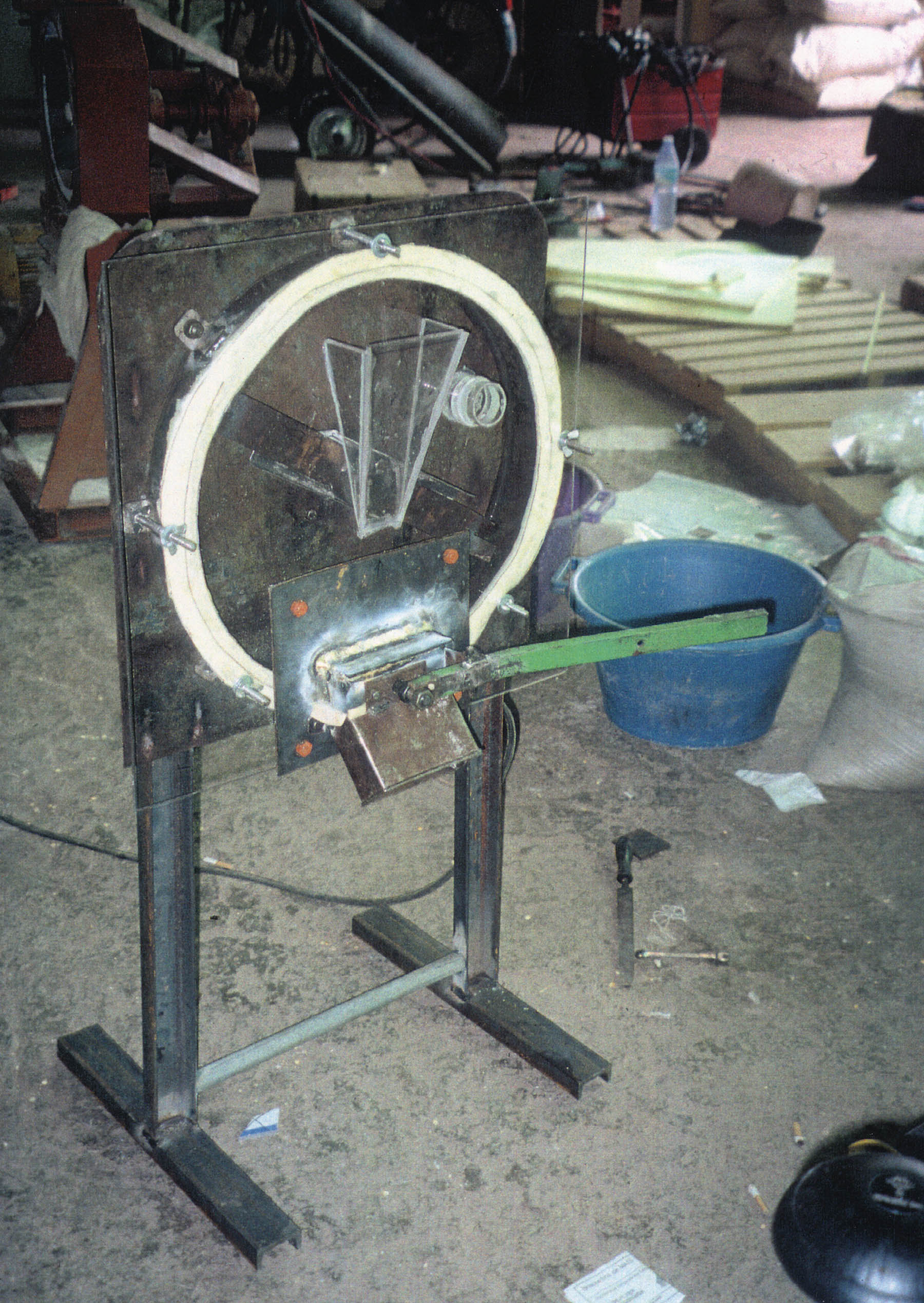
|
Tambacoumba, Senegal |

Grinding grain into flour is one of the most labor-intensive tasks
performed by women in rural areas of developing countries. It takes
about 30 minutes to grind a kilogram of flour by hand, but less than
seventy seconds when using a conventional hammermill. It is no
surprise therefore that mills are one of the most frequently requested
items by women's groups in developing countries. Existing milling
technologies, however, often fall short of the women's expectations.
Several components must be imported and require frequent replacement,
which increases milling costs and requires continued maintenance.

Conventional hammermills have rotating hammers which grind the grain in a grinding chamber and a perforated steel screen which separates the flour from the larger, unground particles. The flour particles are carried through the screen by their centripetal momentum and the larger particles remain inside the chamber. The screens are the most fragile component of the mill; they cannot be produced locally and they are expensive to replace. Furthermore, the screen often gets clogged and the mill must be stopped and the screen cleaned out. In order to make a hammermill which is better suited for rural areas of developing countries, a new type of hammermill was designed to operate without a screen. To further reduce milling fees, the mill was designed to minimize the manufacturing and operating costs.

It is possible to separate flour from unground grain without using a screen by taking advantage of the differences in the aerodynamic properties of the particles. By placing the flour outlet in a suitable location, aerodynamic separation can be achieved. The fine particles are carried out of the mill by the airflow through the outlet and the larger particles remain at the periphery of the mill, as the velocity of the airstream at the position of the flour outlet is not sufficient to divert their motion and carry them out. Further improvements to the mill include a single hammer blade which is directly mounted to the motor shaft and a grits discharge which allows continuous operation of the mill. These improvements allow the mill to be produced at about a quarter of the cost of conventional hammermills. In addition, the energy consumption to operate the mill is decreased by about seventy percent and a superior product is produced.
|
Amy's Home Page
|